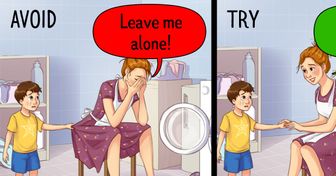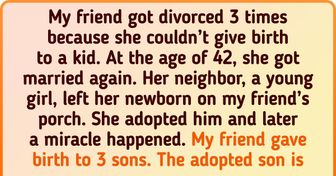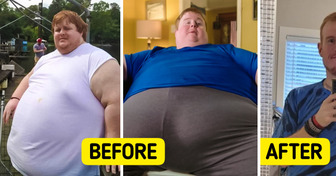10+ Celebrities Doing Ordinary Things Just Like Anybody Else

Making our day-to-day actions sustainable is not getting any easier. Not only does everyone seem to have an additional tip to share, but sometimes simple actions that look environmentally friendly turn out not to be. Even with your heart in the right place, it can get hard to keep up with the changes and make the best choices.
Fear not, as we at Bright Side have your back. It feels great to know we’re doing the best we can, so we’ve collected these 8 tips for you to nail your planet-friendly habits every time.
You choose organic groceries instead of local ones. Buying organic means buying food free from pesticides. Or, in items such as clothes, those that were produced with lower greenhouse gas emissions. But if what you bought traveled around the globe to get to you, they are not that sustainable.
The perfect option would be to purchase items that are both organic and produced nearby. But if that isn’t an option, opting for local and seasonal products is the more sustainable option. That way, you also avoid food grown in greenhouses (that use energy to keep light/temperature), and you make sure your “footprint” is small.
You opt for recycling things instead of ditching plastic. Most plastics are recyclable. But there are a lot of “buts” and “ifs” here.
That “paper” cup we buy for our to-go coffee contains mixed plastic (recyclable only with a special machine). Dirty plastic (like the type containing food residue) isn’t actually recyclable. And straws and most plastic bags? You probably guessed it: they’re not recyclable.
So what do we do? The answer is simple: drop plastic altogether. Choose a nice reusable cup for your coffee or a rad grocery bag and own it. Avoid buying food or other items packed in single plastic, and don’t waste time (and patience) concerning yourself with what can and can’t be recycled.
If skipping plastic is completely unavoidable, then make sure to read the labels carefully and check if the items are clean before throwing them in the bin. And if you are into going the “extra mile,” check if there is a center for repurposing post-consumer plastic near you.
You snag eco-friendly versions of items you already have that are still in good condition. Eco-friendly means “not environmentally harmful,” and glass or metal items (produced near you) can be better options.
But remember that “reducing” and “reusing” are part of the sustainability mantra. This means reducing, as in consuming/buying less, and reusing, as in repurposing good items. That way, the energy spent on their production/transportation was not in vain.
So, for example, what can you do with the plastic toothbrushes you have stored now that you’ve bought new bamboo ones for the whole family? Use them all the same. You can also opt to use them to clean the stovetops (it’s a great hack) or give them to someone in need. Allowing items to reach the end of their usable life is one of the simplest ways of being sustainable.
You choose paper bags instead of taking your own grocery bags to the store. Paper degrades, unlike plastic, and that’s better.
However, the production of paper bags can take up to 4 times more energy to produce. And when you also consider the trees that are cut down for them and the higher concentration of toxic chemicals used during production and transportation (they are heavier), the final count amounts to a pretty hefty carbon footprint.
What can you do? Well, reuse the bags you have at home. Between cotton bags (most are carbon-intensive to manufacture), plastic, and paper bags, the best option is really to remember to take one with you so that you don’t need to get a new one (you can also make your own by repurposing ones you no longer use).
You buy plastic plants instead of filling your home with live green power. While plastic plants can seem convenient, buying them keeps the industry of their production going. And we know the plastic that already exists isn’t going anywhere for at least the next 400+ years.
Also, it’s now known that immersing ourselves in nature benefits our health in many ways, from specific bodily functions to general well-being. That’s where biophilic design was born, which is literally the application of this concept into interior design. And even on a more modest scale, you’d be surprised at some of the extraordinary effects having live plants at home can have.
You flush your dog’s poop instead of just throwing it into the normal garbage. Flushing dog poop can be dangerous, as it can spread cryptosporidium, a parasite that sewage-treatment plants are not currently equipped to filter out. Cryptosporidium is a parasite found in animal waste that can cause diarrhea in humans, and it’s a leading cause of waterborne illnesses.
Also, composting is not really an option, as pet waste contains a variety of pathogens that can only be killed in really high temperatures. So, as of now, throwing it in your normal trash can and allowing it to go into the landfill is the best (and most environmentally friendly) option.
You choose to become a vegetarian without considering seasonal production. Many people are adopting a plant-based diet to reduce meat consumption. But if instead of opting for natural, seasonal products available nearby, you find yourself increasingly dependent on imported products, increasing your impact.
A healthy vegetarian diet might include a variety of foods, like fruits, vegetables, and grains. Avocados are a healthy fat, but their production is water-intensive. Trendy plant-based protein substitutes like tempeh, tofu, and seitan actually have a large carbon footprint and can add “food miles.” Also, industrialized “fake meat” is less healthy, just like most other processed foods.
Go for healthier options and choose local, seasonal, and naturally ripened nutrient-strong foods. Beans, green peas, and lentils are all amazing sources of protein, just like spinach or artichokes. Yogurt and pickles are great for providing prebiotics, and remember to “eat the rainbow” in plants. Check things out with your nutritionist.
You buy food in bulk, even if you’re not sure you’ll be using it all. First of all, buying in bulk instead of buying single-serving packed items is, without a doubt, the best choice. A single snack chip bag is made of up to 7 layers of foil and plastic, and buying in bulk will help you avoid throwing all that expendable packaging in your trash.
However, it only works if you consume everything you buy. Otherwise, you could be contributing to food waste.
Reducing food waste is important to keep food out of landfills. Whether it’s leftovers or spoiled items, the energy and resources used to produce these foods also go to waste when they do. Reducing food waste is one of the biggest steps toward sustainability, plus it helps lower household food bills. Keeping a good meal plan is a trick that makes all the difference.
How attentive are you to this sort of information? Have you ever thrown away something just to replace it with an eco-friendly substitute? What was it?











